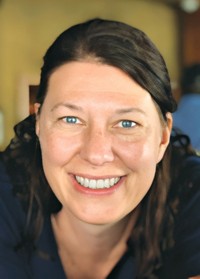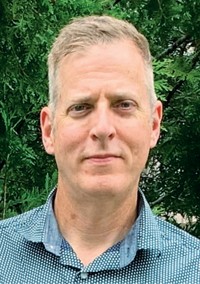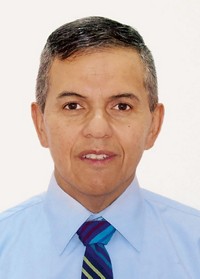Advertisement
Grab your lab coat. Let's get started
Welcome!
Welcome!
Create an account below to get 6 C&EN articles per month, receive newsletters and more - all free.
It seems this is your first time logging in online. Please enter the following information to continue.
As an ACS member you automatically get access to this site. All we need is few more details to create your reading experience.
Not you? Sign in with a different account.
Not you? Sign in with a different account.
ERROR 1
ERROR 1
ERROR 2
ERROR 2
ERROR 2
ERROR 2
ERROR 2
Password and Confirm password must match.
If you have an ACS member number, please enter it here so we can link this account to your membership. (optional)
ERROR 2
ACS values your privacy. By submitting your information, you are gaining access to C&EN and subscribing to our weekly newsletter. We use the information you provide to make your reading experience better, and we will never sell your data to third party members.
Careers
Surveying The Two-year College Chemistry Landscape
by Mary K. Carroll
June 13, 2011
| A version of this story appeared in
Volume 89, Issue 24
Two-year colleges have been the subject of increased focus in recent years and with good reason. The National Center for Education Statistics reports that approximately 20% of undergraduates currently studying science are doing so at a two-year college. The National Science Foundation reports that 40% of students earning science degrees have taken at least one course at a two-year college. Given the diversity of ethnicities, nationalities, ages, and work experiences among two-year college students, engaging and partnering with these institutions benefits everyone in the chemical enterprise.
To better understand how the American Chemical Society and the chemistry community can engage this key educational sector, ACS conducted the Two-Year College Chemistry Faculty Status Survey in spring 2010. Designed to parallel the Committee on Professional Training’s Faculty Status Survey of departments offering a bachelor’s degree in chemistry, the Two-Year College Chemistry Faculty Status Survey collected information on the types of chemistry programs offered, faculty demographics, and academic environments.
The results of the survey paint a picture of a landscape that is as diverse as the students it serves. The 227 survey responses (from 1,101 campuses) indicate that two-year colleges fill a variety of needs in chemical education, from preparation for advanced degrees to career advancement to support for other areas of study. Long-term and permanent faculty were reported to teach the majority of students. Most faculty members had access to professional benefits. Complete information can be downloaded at www.acs.org/2YFacultyStatus.
Programs & Courses. Survey results indicate that two-year colleges fill multiple roles. In addition to chemistry programs that prepare students to transfer to bachelor’s chemistry programs, 20% of the 227 responding institutions offer chemistry-based technology or other applied chemistry degree programs. Moreover, 19% reported offering a variety of chemistry-related programs, ranging from biomedical science to fuel-cell technology, and 21% reported having no dedicated chemistry program.
Some 53% of chemistry lecture sections support chemistry or chemistry-based technology degree programs. An additional 30% were developed specifically to support nonchemistry majors. Most reported courses had a laboratory component, and on average, students spent equal amounts of time in lecture and lab.
Faculty Roles & Demographics. Of all the faculty positions reported, about 30% were tenure-track, had unlimited or rolling contracts, or were other types of effectively permanent faculty positions. Contingent faculty, including adjunct and temporary faculty, filled 49% of all reported faculty positions, and the remaining 21% were long-term faculty (that is, faculty with one- to three-year contracts). Additionally, 22% of the responding institutions reported having no permanent chemistry faculty, 23% reported having no contingent faculty, and 10% reported having contingent faculty in full-time positions.
While contingent faculty made up almost half of the chemistry faculty and instructional staff at the reporting two-year colleges, they taught just 34% of all chemistry lecture sections and 38% of all chemistry laboratory sections. Permanent and long-term faculty members taught the remainder of the sections and were more concentrated in lecture sections and courses designed for chemistry majors.
Approximately 40% of reported faculty were female and 68% were Caucasian. The highest chemistry degree obtained was a doctorate for 47% of the faculty and a master’s for 43%. There was little variance observed in these demographics among institutions.
Professional Benefits & Opportunities. Across the board, two-year college chemistry faculty at the responding institutions had access to a variety of professional benefits and opportunities. Most responding institutions offered full-time faculty private offices and computers, medical benefits, and support for professional development. Three-fourths of institutions reported offering sabbaticals or reduced teaching assignments that allow faculty to pursue pedagogical development projects and other scholarly activities. About 30% of institutions reported having research space available for their permanent and full-time faculty.
Several respondents noted that professional development was funded at a very low level at their institutions. Others commented that these funds, while technically available, were withheld by administrations or state governments, which might not recognize the value of professional development to faculty members and their institutions.
Although few responding institutions offered contingent faculty the same benefits as full-time faculty, contingent faculty members were viewed as professionals. For example, nearly half of the responding institutions reported offering professional development opportunities to contingent faculty, and just over half included contingent faculty in departmental meetings.
Moving Forward. The Society Committee on Education’s Task Force on Two-Year College Activities is partnering with the ACS Two-Year College Chemistry Consortium to leverage existing resources and develop new ones based on the results of this and other surveys. For more information on ACS resources for two-year colleges, visit www.acs.org/2YColleges. Please direct any questions, comments, or suggestions to 2YColleges@acs.org or call (800) 227-5558 ext. 6108.






Join the conversation
Contact the reporter
Submit a Letter to the Editor for publication
Engage with us on Twitter